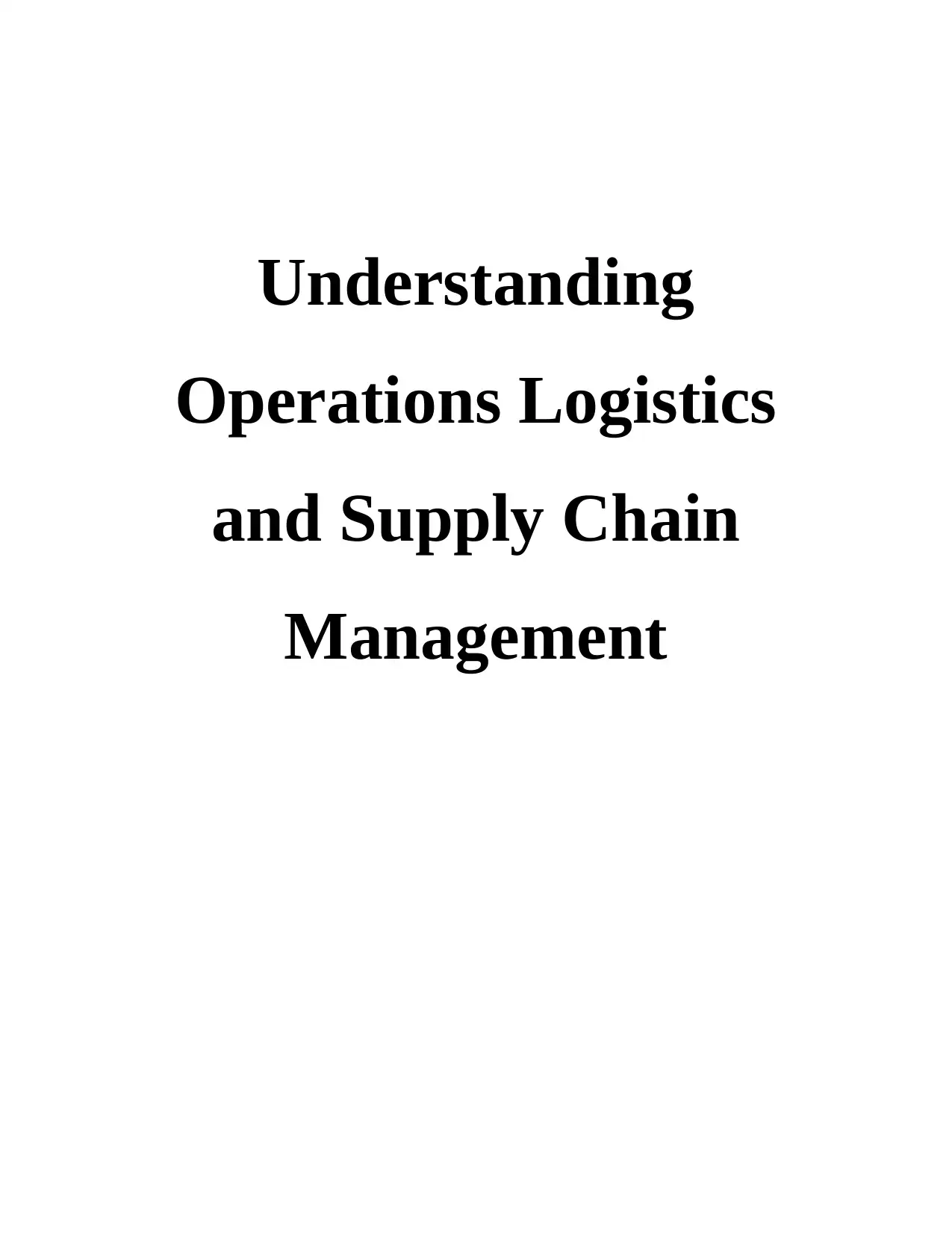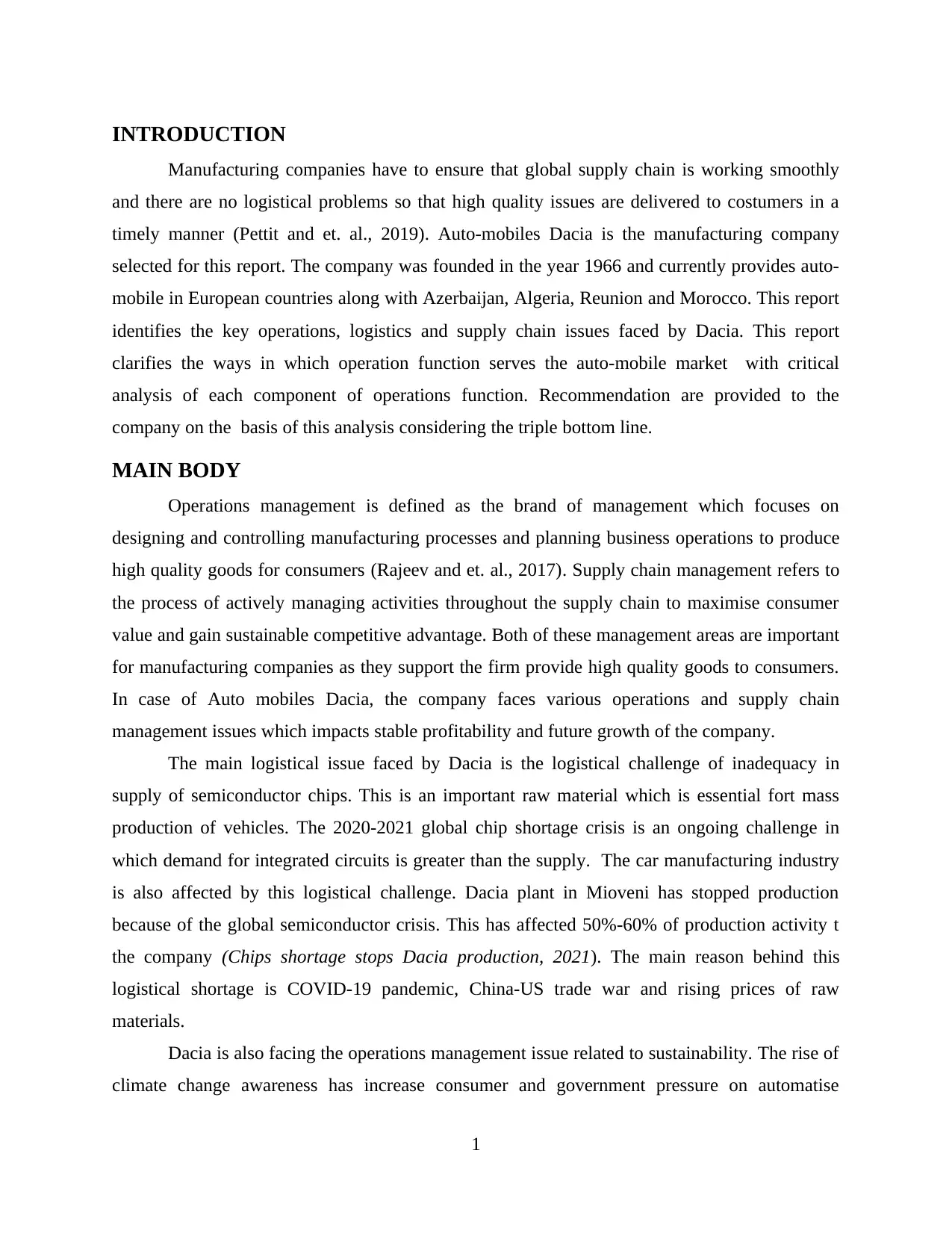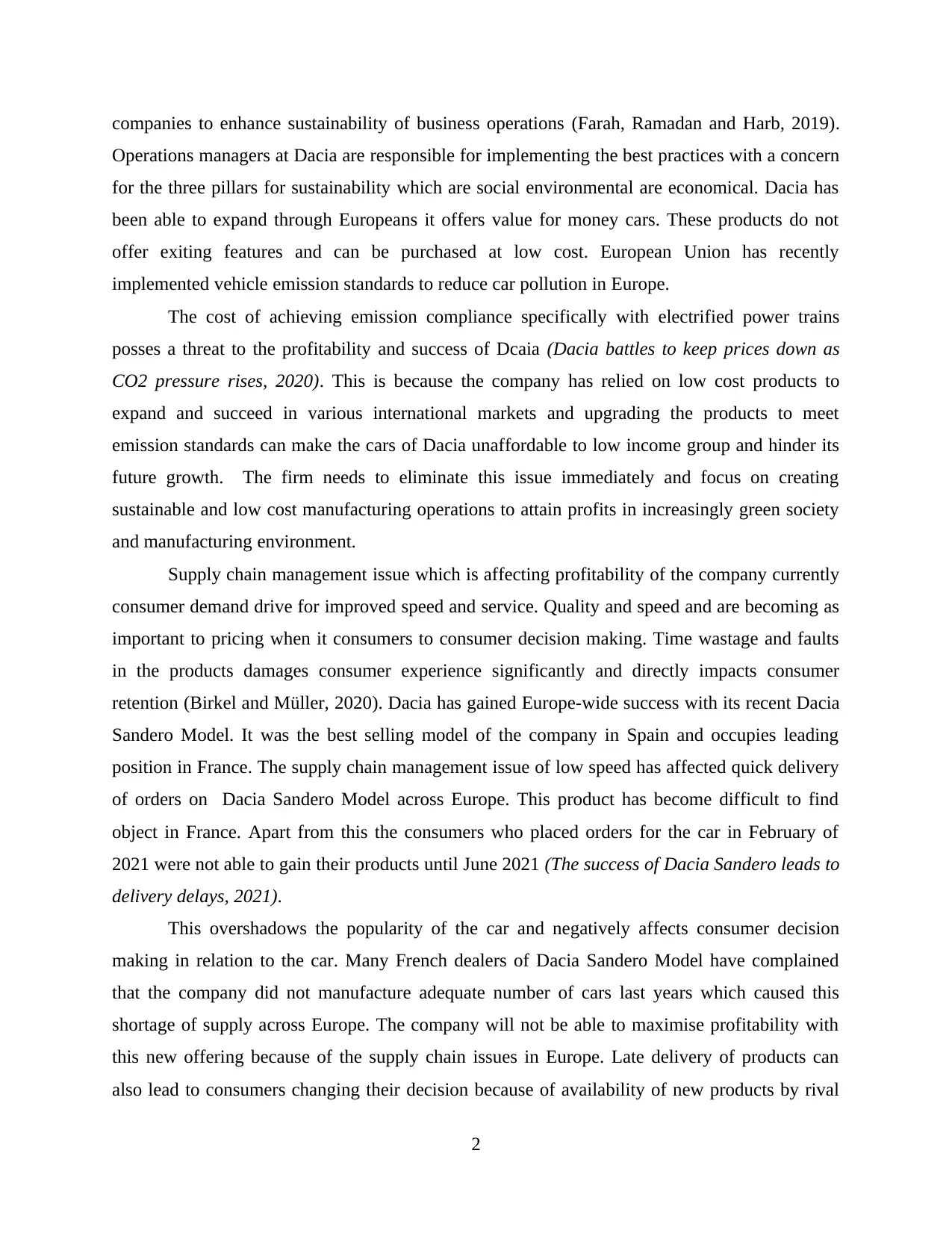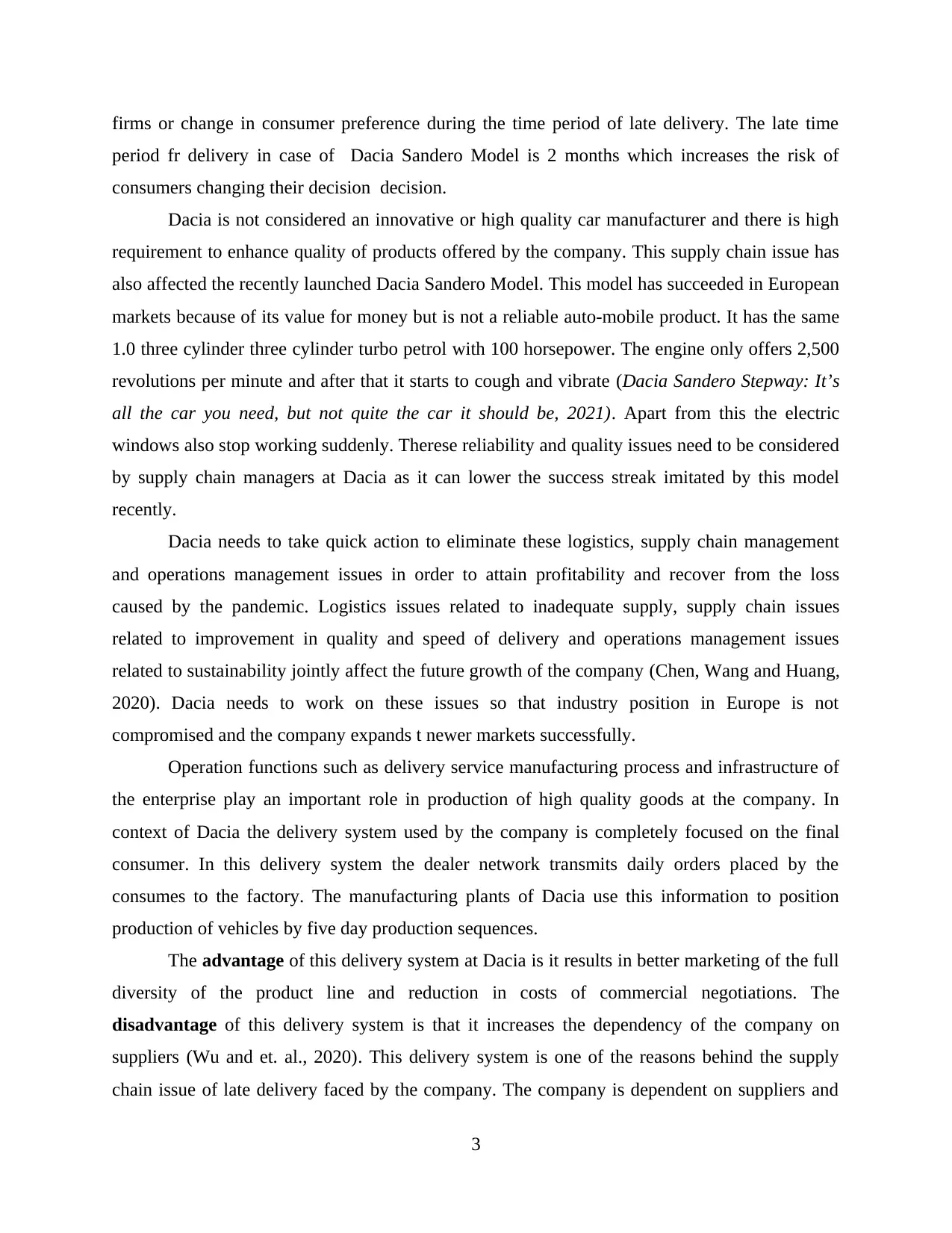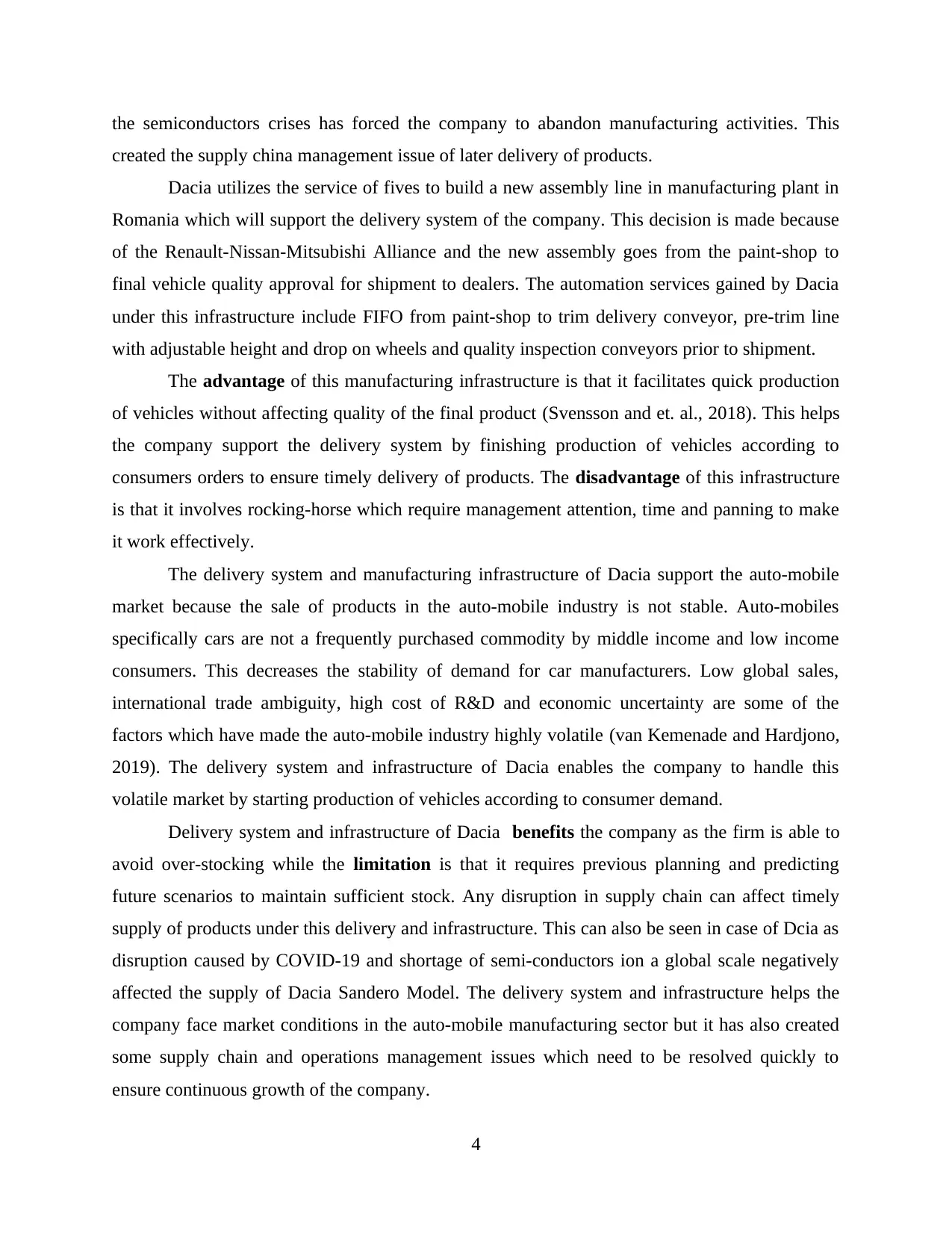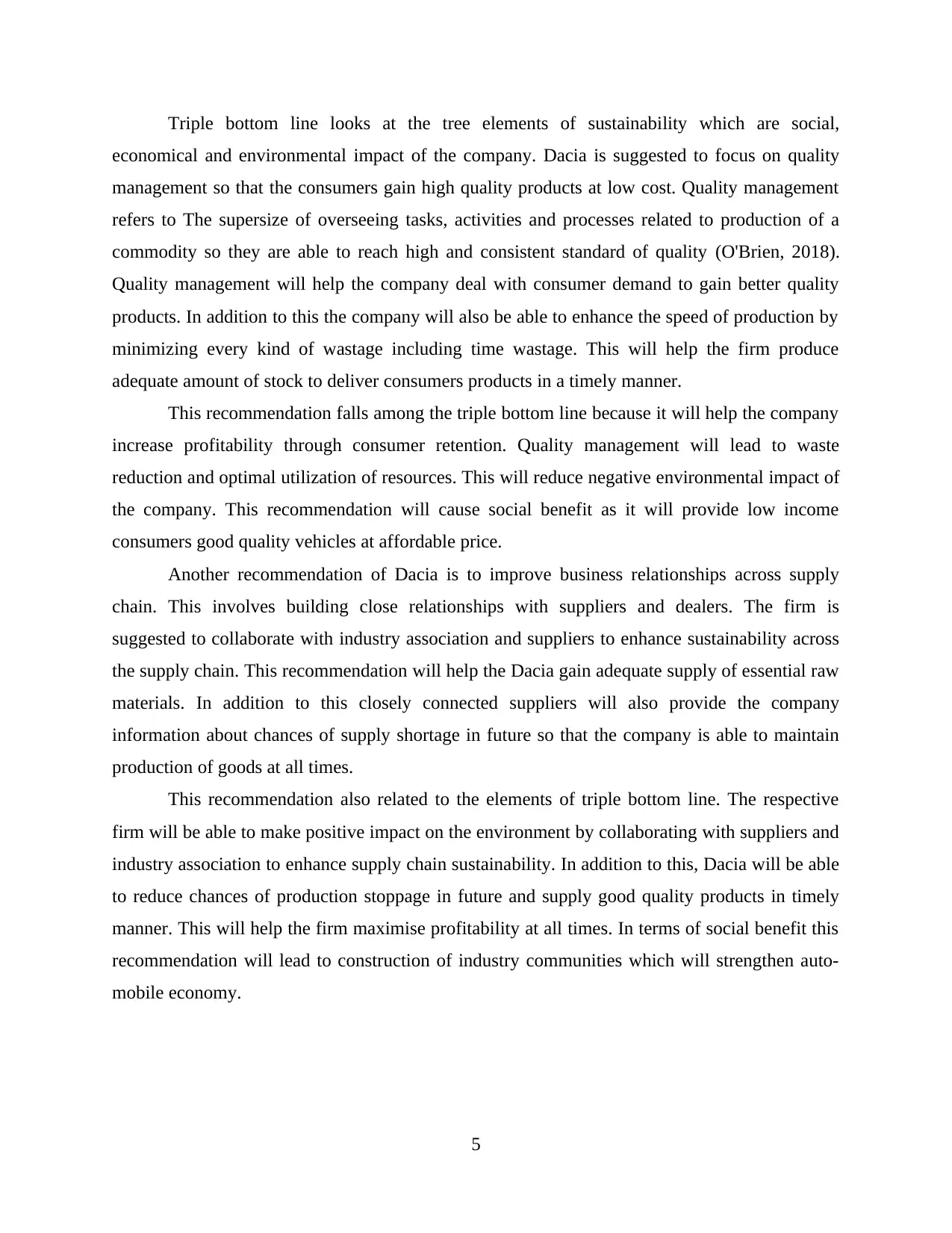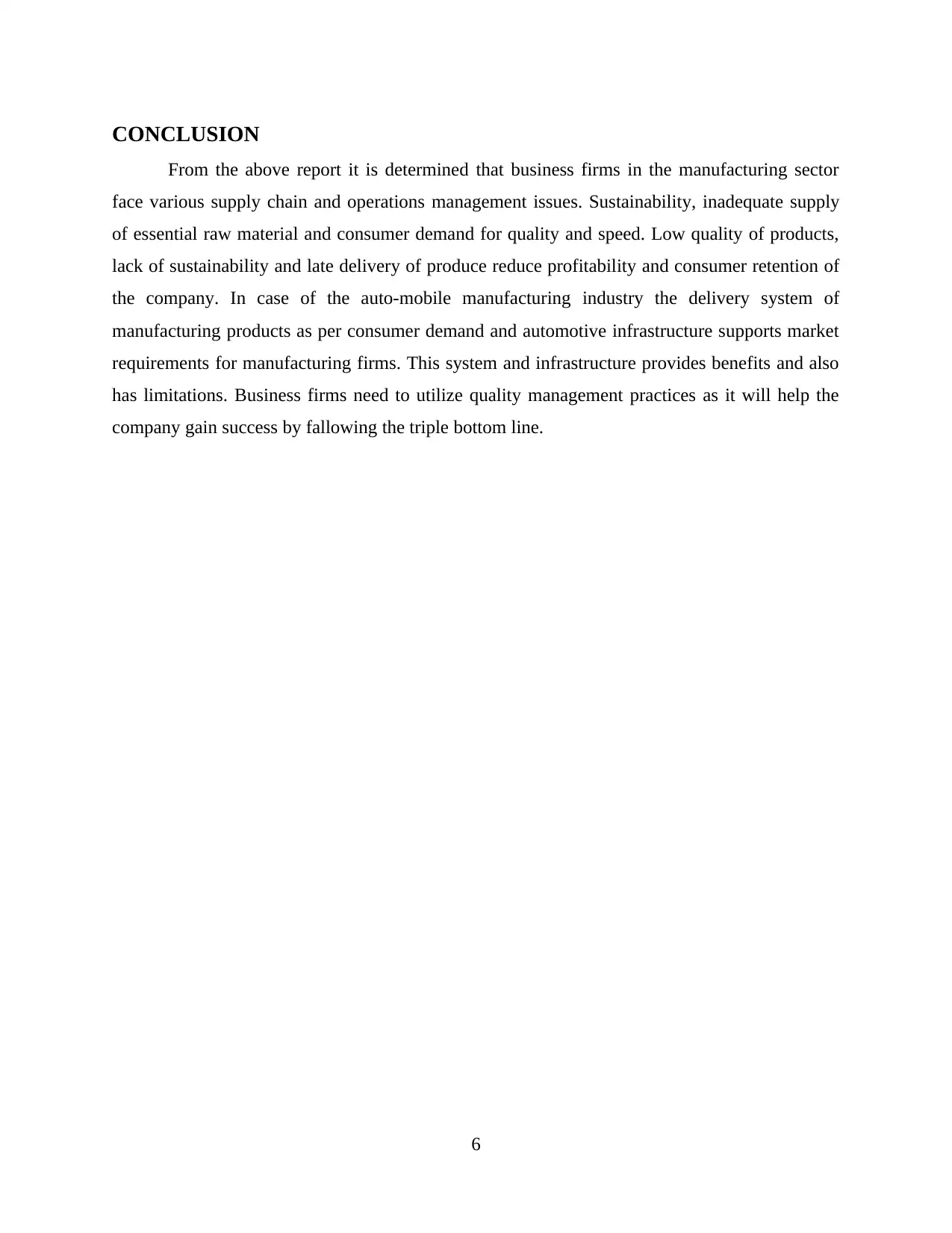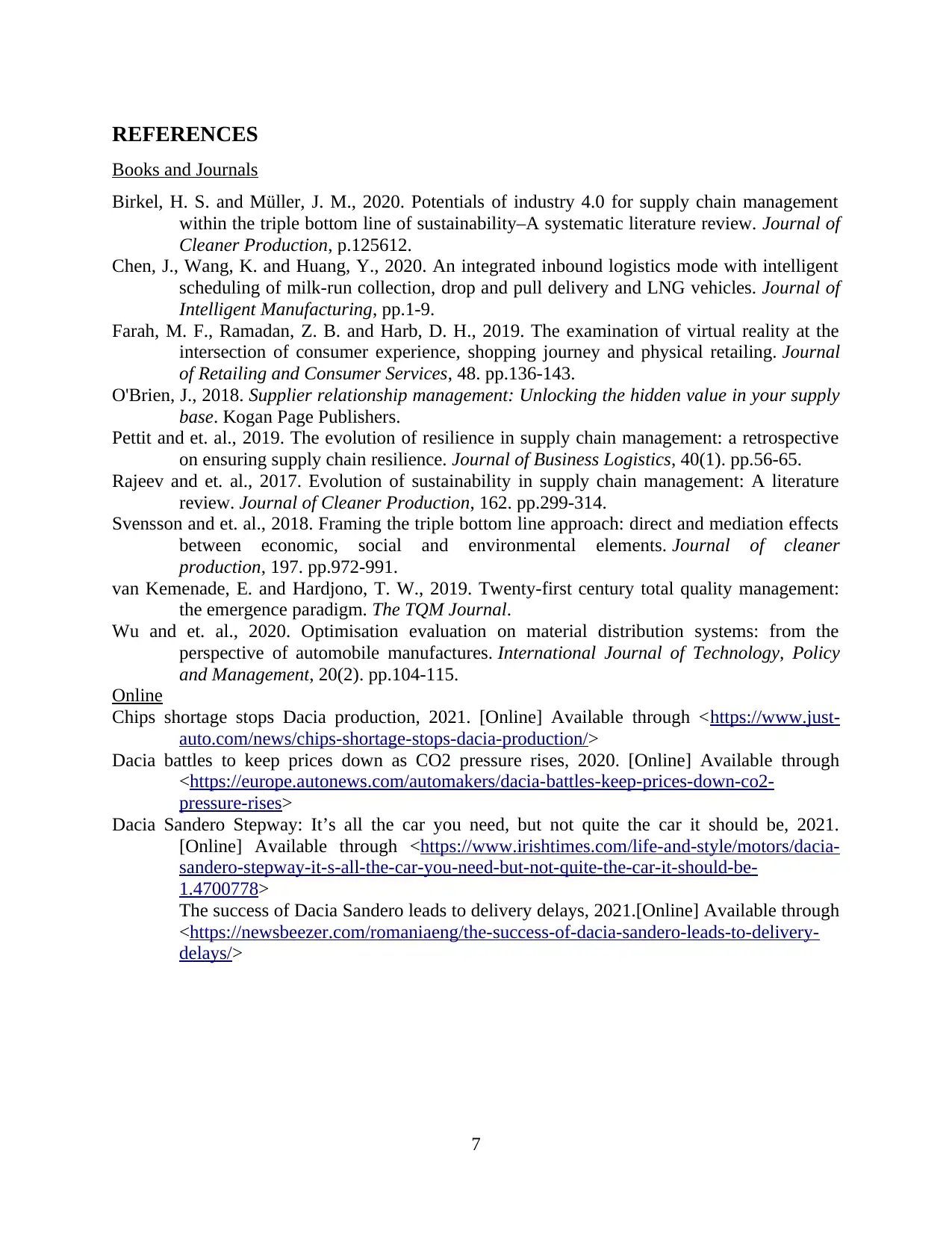This report identifies the key operations, logistics and supply chain issues faced by Dacia, a manufacturing company. It discusses the logistical challenge of inadequacy in supply of semiconductor chips, operations management issue related to sustainability, and supply chain management issue related to improvement in quality and speed of delivery. The report provides recommendations to overcome these issues and attain profitability. The delivery system and infrastructure of Dacia supports the auto-mobile market by starting production of vehicles according to consumer demand. The report concludes with a discussion on the triple bottom line approach and how quality management and improving business relationships across the supply chain can help the company gain success.
![[object Object]](/_next/static/media/star-bottom.7253800d.svg)
![[object Object]](/_next/static/media/star-bottom.7253800d.svg)
